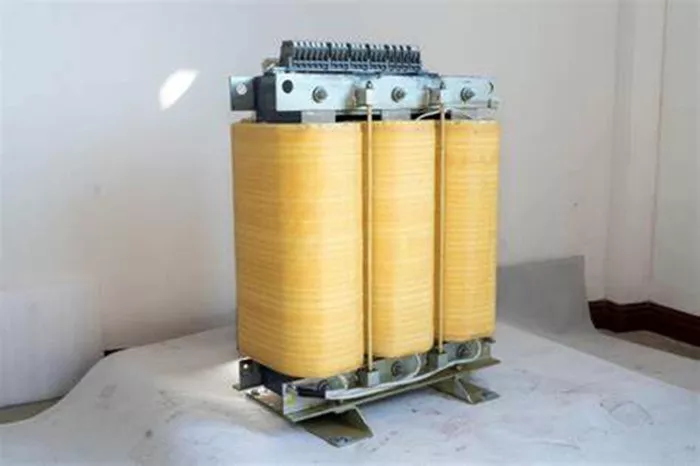Control power transformers are specialized electrical devices designed to provide stable, low-voltage power to control circuits and devices. These transformers are crucial in various industrial and commercial applications, ensuring the safe and efficient operation of control systems. Unlike power transformers that distribute electrical energy, control power transformers are specifically designed to supply power to control circuits and auxiliary equipment within a system.
Control power transformers ensure that control circuits, which often require lower voltage levels, receive a stable and safe power supply. They isolate the control circuits from the main power circuits, enhancing safety and protecting sensitive control devices from potential electrical faults in the primary power supply.
Key Functions of Control Power Transformers
Voltage Transformation
The primary function of a control power transformer is to step down the high primary voltage to a lower secondary voltage, typically ranging from 24V to 480V. This lower voltage is necessary for the operation of control devices such as relays, timers, and contactors.
Isolation
Control power transformers provide electrical isolation between the primary (high voltage) circuit and the secondary (low voltage) control circuit. This isolation protects the control devices and personnel from potential electrical shocks and faults in the primary circuit.
Voltage Regulation
These transformers help in maintaining a stable voltage level despite fluctuations in the primary voltage. Stable voltage is critical for the accurate and reliable operation of control equipment.
Safety
By stepping down the voltage and isolating control circuits, control power transformers contribute to the overall safety of electrical systems, reducing the risk of electric shock and equipment damage.
Construction and Design
Control power transformers are typically constructed with a laminated steel core and two or more windings. The primary winding is connected to the main power supply, while the secondary winding provides the lower voltage output for the control circuits.
The design of control power transformers takes into account various factors such as the required secondary voltage, power rating, and insulation requirements. They are often designed to withstand harsh industrial environments and offer protection against short circuits and overloads.
Types of Control Power Transformers
Control Voltage Transformers
Control voltage transformers are used to convert a high voltage to a lower control voltage (such as 208 to 120 control transformer, 220v to 110v control transformer, 24-volt control transformer, 240v to 24v control transformer, 277v to 120v control transformer) to provide a stable, safe power supply to control circuits and equipment.
Enclosed Control Transformers
Enclosed control transformers are transformers enclosed in protective housing, specifically designed to convert the high voltage of the main power supply to the low voltage required by the control circuit. This enclosed design not only protects the transformer itself but also improves the safety of installation and operation.
Industrial Control Transformers
Industrial control transformers are used in industrial environments and are specifically designed to provide stable low-voltage power to control circuits. These transformers typically convert high voltages (such as 120V or 240V) in industrial power systems to lower control voltages (such as 24V or 48V) to supply control devices, relays, contactors, and other industrial automation equipment.
Three-Phase Control Transformers
Three-phase control transformers are used to convert three-phase power (usually a higher voltage such as 480V, or 600V) into a lower control voltage (such as 24V, 48V, or 120V) to provide a stable power supply for various control circuits and equipment.
Single-Phase Control Transformers
Single-phase control transformers are used to convert a single-phase power supply (such as 120V or 240V) to a lower control voltage (such as 24V or 48V). They are suitable for systems with smaller power requirements, and their applications are more extensive and flexible than three-phase control transformers.
Applications of Control Power Transformers
Control power transformers are used in a wide range of applications, including:
Industrial Machinery: Providing stable power to control panels and automation systems.
Heating Systems: Supplying power to furnace control circuits and related components.
Motor Control Centers: Ensuring reliable operation of motor starters, contactors, and relays.
HVAC Systems: Powering control devices in heating, ventilation, and air conditioning systems.
Selection Criteria for Control Power Transformers
When selecting a control power transformer, several factors should be considered:
Inrush Current
Control power transformers must be able to handle the momentary inrush current that occurs when electromagnetic devices are energized. This inrush current can be significantly higher than the normal operating current, so it is important to select a transformer that can handle this initial surge.
Sealed VA
The sealed VA is the amount of volt-amperes required to maintain the energized state of an electromagnetic device. This VA requirement is typically 5 to 10 times less than the inrush VA.
Voltage and Power Ratings
Control power transformers are available in a wide range of voltage and power ratings. It is important to select a transformer with the appropriate ratings to ensure reliable operation.
Compliance with Standards
In the United States, compliance with NEMA Standard ICS 2-110 is an important consideration. This standard requires that alternating current contactors must be able to successfully close at 85% of their coil rated voltage.
Conclusion
Control power transformers are essential components in modern electrical systems, providing stable and safe power to control circuits and devices. Their ability to step down voltage, provide isolation, and maintain stable voltage levels makes them indispensable in industrial and commercial settings. By understanding the functions, types, and selection criteria of control power transformers, engineers and technicians can ensure optimal performance and reliability in their systems.
Related Topics:

